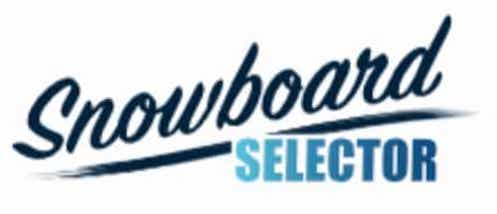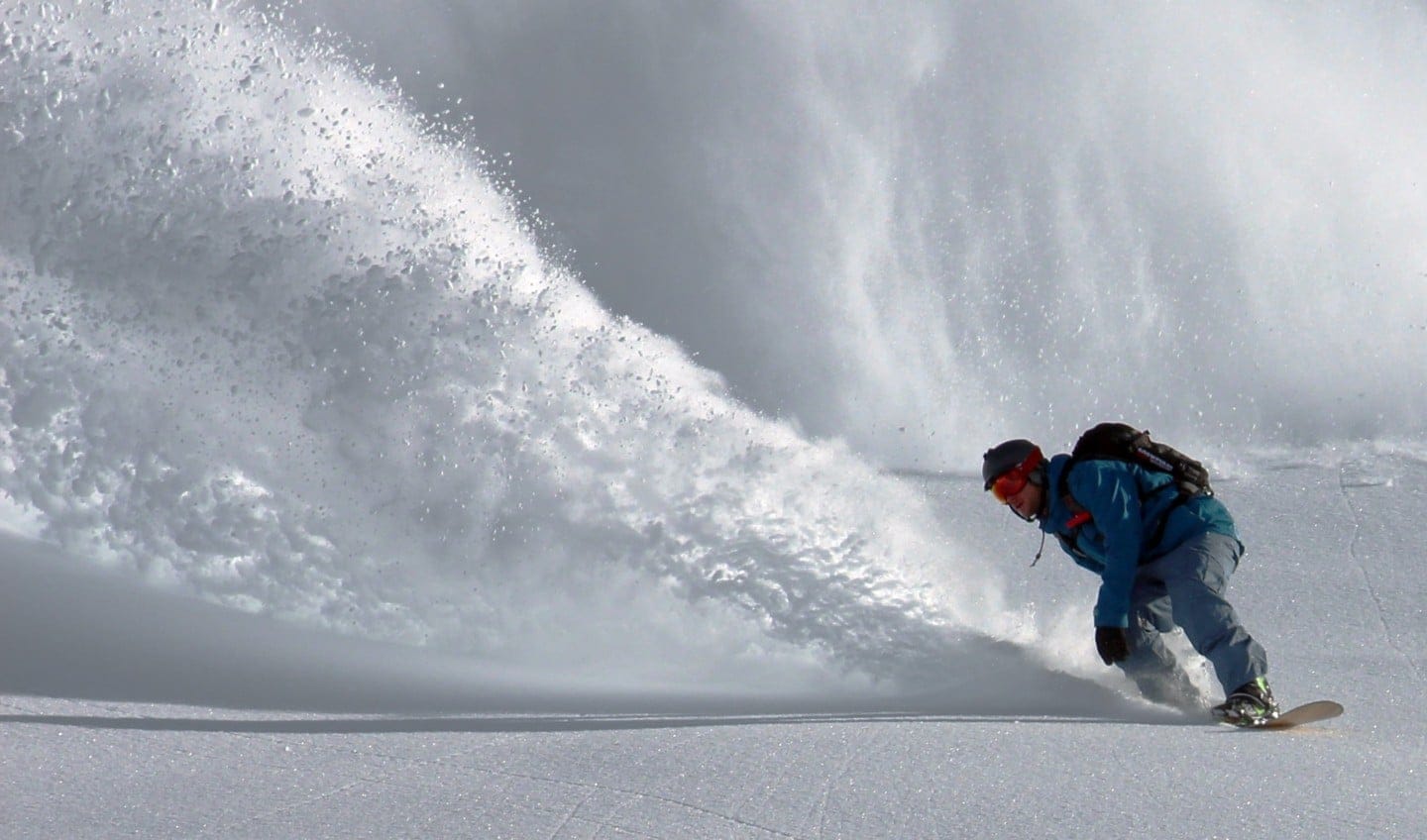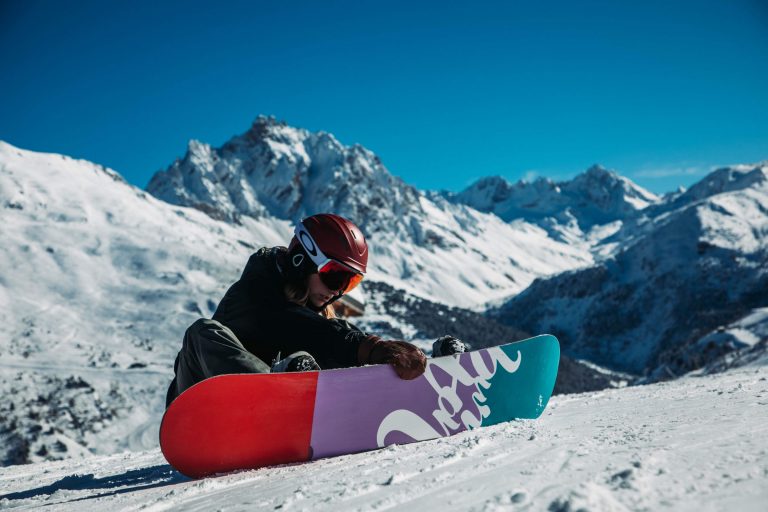Simply put, freestyle snowboarding is when snowboarders do tricks. These skateboard-influenced tricks can be done anywhere on the mountain or in the streets, but are mostly done in terrain parks on jumps, rails and boxes, and half-pipes.
Choosing the right snowboard for freestyle is important, because your equipment can either help your progression or hinder it.
This article will begin by highlighting some of the important features to consider when choosing a freestyle snowboard and will explore some of my top picks from this year’s selection.
Try our free snowboard size calculator for tailored board recommendations.
What to Look For in a Freestyle Snowboard
A few of the factors to consider when choosing a freestyle snowboard are:
- Shape
- Flex
- Profile
- Stiffness
- Length
- Construction
- Fiberglass design, base material, etc.
We’ll explore each of these in more detail below.
In terms of recommendations for freestyle snowboards, it’s important to consider what you want to prioritize: aerials or jibbing?
Shape
There are two main shapes in snowboard construction: Twin and Directional.
For freestyle snowboarding, I recommend Twin shape, which has equal tail and nose length versus directional, which has a slightly longer nose and a slightly shorter tail.
Having equal nose and tail length allows you to take off and land tricks both natural and switch (i.e., with your natural back leg forward), which is a key part of freestyle.
Flex
Just like shape, flex is generally either Twin or Directional (e.g., stiffer tail) and again, I recommend Twin for the same reasons as stated above.
A board with a twin shape and twin flex is called a “True Twin,” which is an ideal construction for a fully freestyle-dedicated snowboard.
Profile
There is a huge variety of profile designs and opinions of those designs available on the market; traditional camber, reverse camber, hybrid, and flat.
The best profile type for freestyle snowboarding depends on what kind of tricks you want to do.
- For jumps and half-pipe, traditional camber is the best choice in my opinion. It gives the power and stability required to stay safe at high speeds as you soar into the air.
- For boxes and rails, hybrid profiles with flat or reverse camber on the nose and/or tail can help to lock into presses (i.e., where the snowboarder is balancing on either the nose or tail of the board with the other end floating off the surface of the obstacle).
For a board that can do it all, I’d suggest a true-twin, traditional camber snowboard. It’s super-important to have edge hold and stability with jumping, and you can learn to press a traditional camber board as long as it’s not too stiff. Which brings us to the next point …

Stiffness
Different boards vary through a range of stiffness, or bend, from soft to stiff, depending on the materials used for the core, the presence of stringers or not, and the way that fiberglass has been laid out and set. But more on that later.
For freestyle snowboards, I recommend medium stiffness as a good all-around choice.
- Soft stiffness can be really fun, especially if you’re mostly into buttering (i.e., balancing and rotating on the nose and tail on snow) and jibbing (i.e., doing tricks on boxes, rails, tree stumps, etc.). Getting into these kinds of tricks is simply easier on a soft board; however, for what it delivers in buttering and jibbing, it underdelivers in stability and energy which makes aerials (i.e., jumping, half-pipe, etc.) safe and controlled.
- Hard stiffness is more about stability and energy at high-speeds. This can be useful if you’re hitting L and XL jumps, looking to boost high out of the pipe, or are charging down the mountain at high speeds.
A medium-stiff board delivers the best of both worlds and will give you the playfulness you need to jib and butter your way down the hill as well as keep you confident as you sail into the air.
Length
Snowboards should generally come to somewhere between your collar bone and your nose when the tail of the board is flush with the ground.
Longer snowboards offer more stability but less maneuverability; whereas, shorter snowboards offer the opposite.
For freestyle snowboarding, I recommend choosing a board on the shorter end of the spectrum to favor maneuverability; that is, the board should come somewhere between your chin and your collar bone.
A shorter board will deliver the agility you need to spin off of jumps and reduce the chances of catching the nose or tail on a box or rail as you roll up to grind (i.e., get on the obstacle and slide it).
Construction
Snowboards all have a core, many have stringers (i.e., little strips of material that run nose to tail to increase stiffness), and all have layers of fiberglass. The choice of materials used and their placement affect the stiffness and feel of the snowboard.
- Cores are generally either wood or carbon; carbon will be stiffer than wood, so for freestyle snowboarding, a wood core is what I recommend (e.g., maple, bamboo, etc.)
- Fiberglass can be laid in a triaxial pattern (i.e., with some layers at 45°) or in a biaxial pattern (i.e., layers at 0° and 90° from each other).
- Triaxial patterns offer more torsional stiffness (i.e., twisting the board heel to toe) which can be useful for stability; think aerials.
- Biaxial patterns offer less torsional stiffness, which can deliver a “locked in” feeling when sliding on thin rails because you can twist the board to “hug” the rail.
- Base types range from extruded bases to sintered bases, with the main differences being:
- Extruded bases require less maintenance and are cheaper, but are slower.
- Sintered bases require waxing more often, are more intricate to repair, and are faster and harder.
In terms of recommendations for freestyle snowboards, it’s important to consider what you want to prioritize: aerials or jibbing?
As for my recommendation, I recommend wood core, triaxial fiberglass, and a sintered base; I prioritize stability for aerials and just simply make it work for jibbing.
Best Freestyle Snowboards of the Season (25/26)
The following are my recommendations for some of the best freestyle snowboards of the season. Each entry includes key specs and a brief explanation of my recommendation. Enjoy!
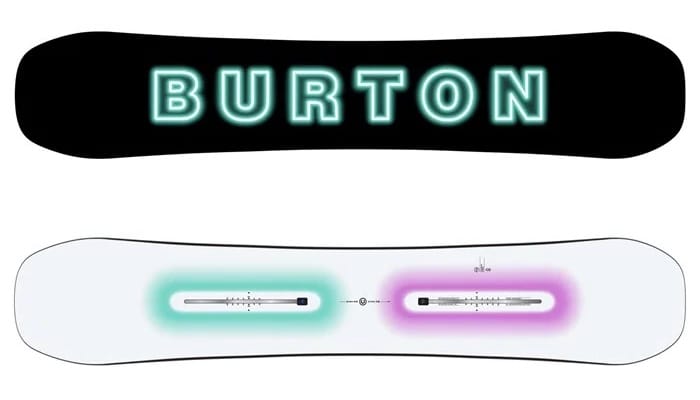
Burton Custom
Price: $679.95
Shape & Flex: Directional Twin, mid flex
Profile: Traditional Camber
Construction: Wood core, triaxial glass
Base: Sintered base
The Burton Custom has been the go-to board in my quiver for the past 20 years, so yes, there is definitely some affinity bias here; however, it’s remained in my quiver for very good reasons: All-mountain destroyer, playful and fun, very strong base, versatile.
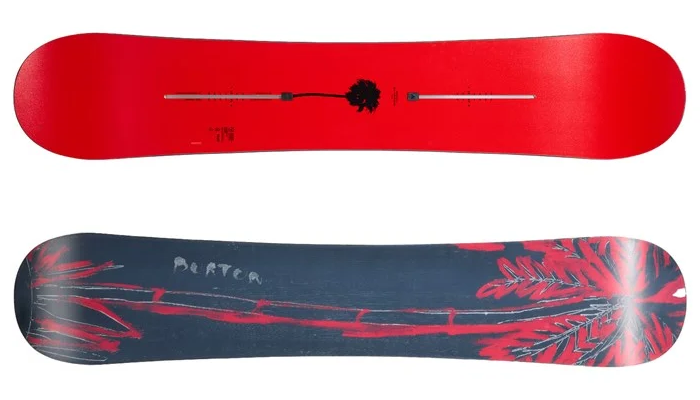
Burton Blossom
Price: $559.95
Shape & Flex: True Twin, stiff flex
Profile: Traditional Camber
Construction: Wood core, triaxial glass
Base: High-quality sintered base
The Burton Blossom is a higher-end park board which can create a lot of energy in your riding. For some, the stiffness might be too much and they can lean on the Good Company or the Process for something more playful. I like big jumps and energy, so for me the Blossom is a top pick.
Read more about the Burton Blossom vs. Burton Process here.
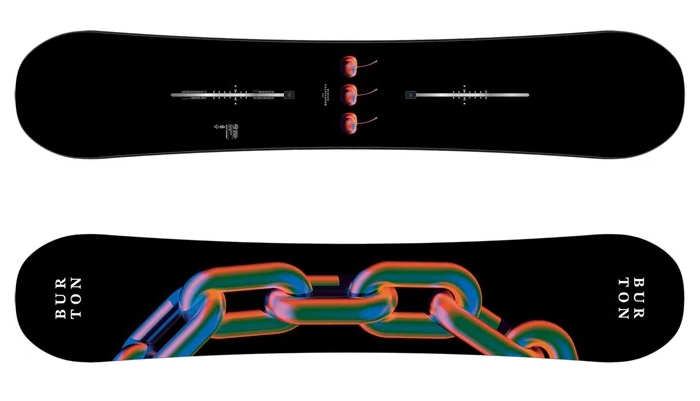
Burton Cultivator
Price: $429.95
Shape & Flex: True Twin, soft flex
Profile: Hybrid; flat with rockered tips
Construction: Wood core, triaxial glass
Base: High-quality sintered base
The Burton Cultivator is a good entry-level park board which will deliver loads of fun when it comes to jibbing and flatland. It will feel a bit less stable off of jumps, but will be a great tool for your progression at a decent price tag.

CAPiTA Spring Break Stairmaster
Price: $479.95
Shape & Flex: True Twin, mid flex
Profile: Hybrid; traditional camber, with small flat before tips
Construction: Wood core, triaxial glass
Base: Sintruded base, best of both worlds
The Stairmaster is a mainstay in freestyle snowboards year after year, due to its quality and price tag. It offers standard mid-stiffness power and pop and a strong base with lower maintenance than any of the previously mentioned boards.

Endeavor Rover Pro
Price: $619.00
Shape & Flex: True Twin, mid flex
Profile: Hybrid; traditional camber, with small flat before tips
Construction: Wood core, triaxial glass
Base: Sintered base
Solid board delivering a fast, smooth ride with plenty of energy in the turns. The flat tips make it fun and easy to butter, while the fiberglass construction allows it to deliver strong energy. A good board at a decent price tag.
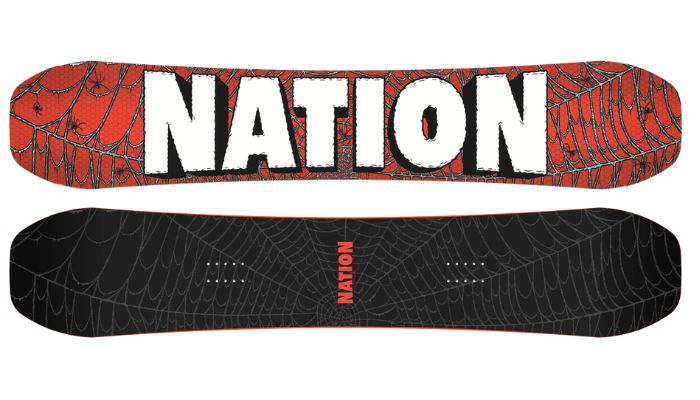
Nation Made Double Double
Price: $583.00
Shape & Flex: True Twin, slightly-more-than-mid flex
Profile: Hybrid; traditional camber, with small flat before tips
Construction: Wood core, triaxial glass
Base: Sintered base
A great board from a smaller company which delivers a park-perfect board. Similar to the Endeavor Rover Pro, the glass laminates paired with the slightly more than mid-stiffness give it some extra energy to pop you safely into the air.
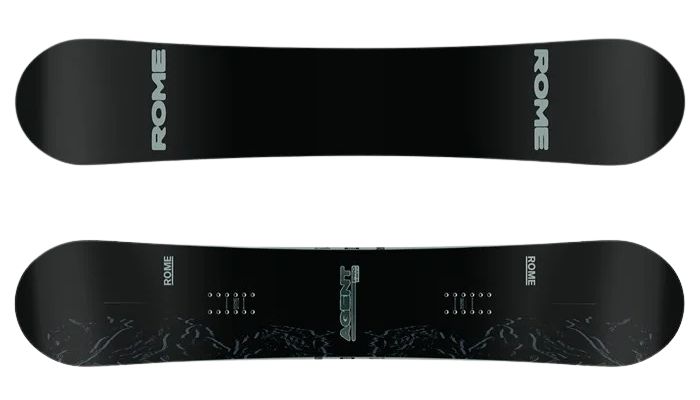
Rome Agent Pro
Price: $629.95
Shape & Flex: True Twin, stiffer flex
Profile: Hybrid; traditional camber, with small rocker before the tips
Construction: Wood core, biaxial glass with carbon stringers
Base: Sintered base
Higher-performance park board which balances its rail-hugging biaxial qualities with a stiffer tip to tail construction to make sure you can still boost your jumps and ollies into the stratosphere. Tried, tested, and true, this board is a solid investment.
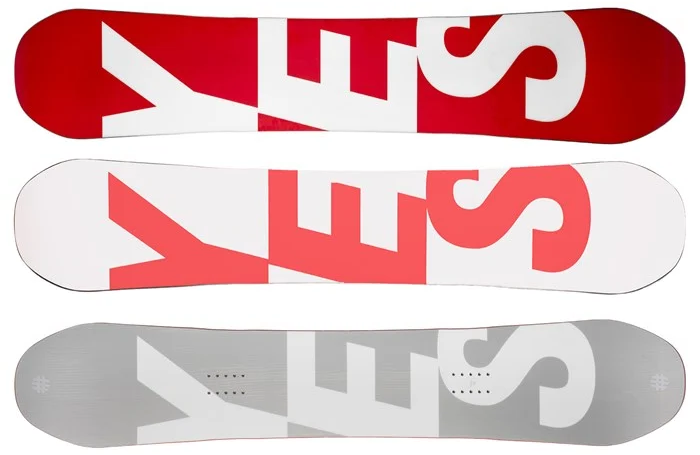
YES Basic
Price: $449.95
Shape & Flex: True Twin, slightly-more-than-mid flex
Profile: Hybrid; traditional camber, with small rocker before tips
Construction: Wood core, biaxial glass
Base: Extruded base
This board sits at a great price point and delivers a great experience for snowboarders beginning park riding. The biaxial glass and mid-flex make it a playful snowboard great for jibbing.

Nitro Cheap Thrills
Price: $399.95
Shape & Flex: True Twin, mid flex
Profile: Hybrid; traditional camber, with small flat before tips
Construction: Wood core, biaxial glass
Base: Extruded base
A solid freestyle board with a minimal carbon footprint, the Cheap Thrills will deliver a fun and playful experience with its biaxial glass and mid-flex. If you care about the environment as much as your snowboarding, this is a great choice.
Bonus Tips for Buying a Freestyle Snowboard
Knowing which specs to look for and how they affect the feel and performance of your board is just the beginning. Choosing a brand that not only has the product that fits your needs, but that has a philosophy that fits yours is the best way to invest your money.
Beyond the board itself, there are a few other things to consider before making your purchase:
Match Your Set Up
Your boots and bindings play a crucial role in which board you should ultimately choose.
Firstly, what if the fastening system: traditional inserts or channel system? Are your current bindings compatible with the board you’re looking at or will you have to invest in new bindings as well?
Next, what size boots do you wear and will they fit the board you want? Many freestyle boards have wider waists to accommodate bigger boots, to allow for shorter overall board length. Do your research and see what fits your boots.
Consider Your Resort
Another very important consideration is where and what kind of terrain you ride. Are there jumps at your resort or only boxes and rails? Knowing what is available and what type of riding you want to focus on will help determine which board is best for you.
Conclusion
Now you should have a good idea why someone might have a board with triaxial glass vs biaxial, or which level of stiffness will help someone boost higher and in more control off of jumps.
The best board really depends on your skill level, your goals, and what terrain is available to you this coming winter.
A great way to help determine which board is best for you is to go out and try them. Demo days exist and brands are ready to let you try their boards to make sure they are the right fit for you and your snowboarding.
